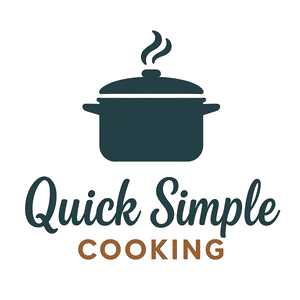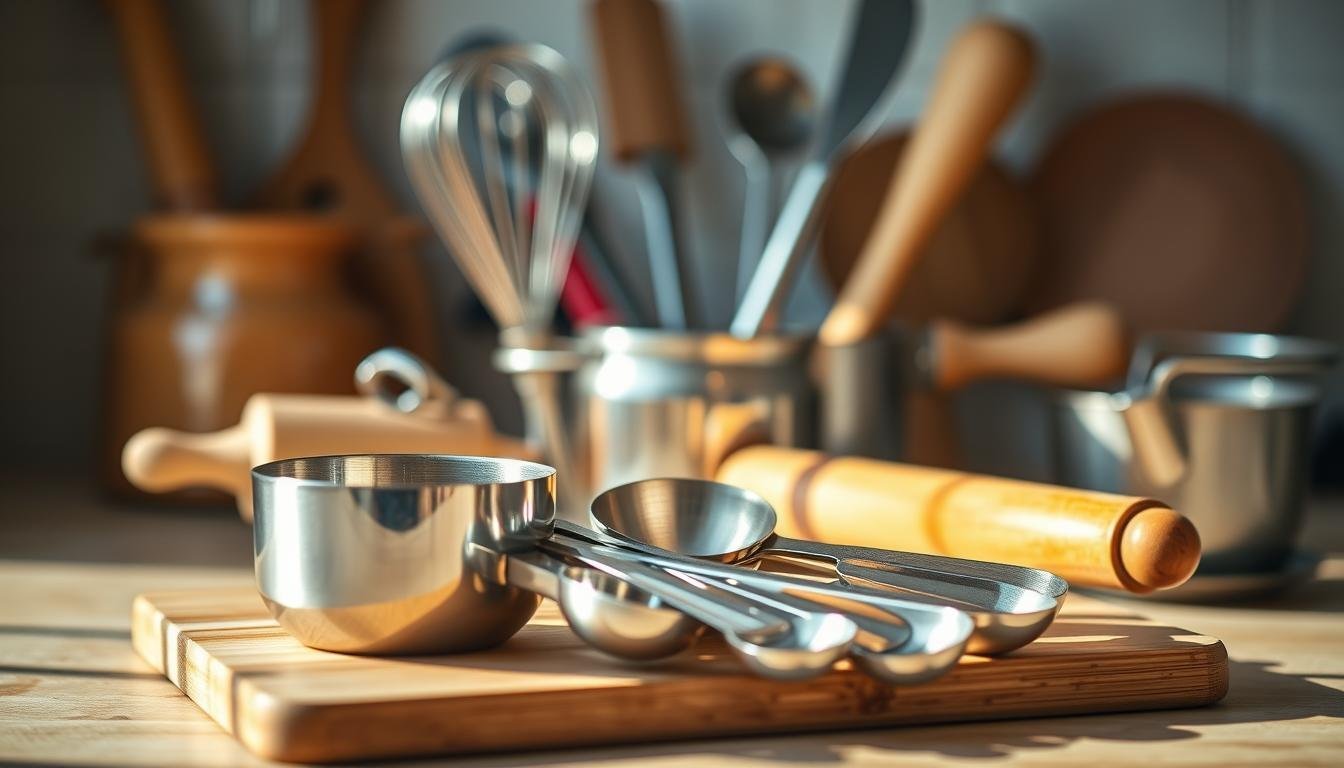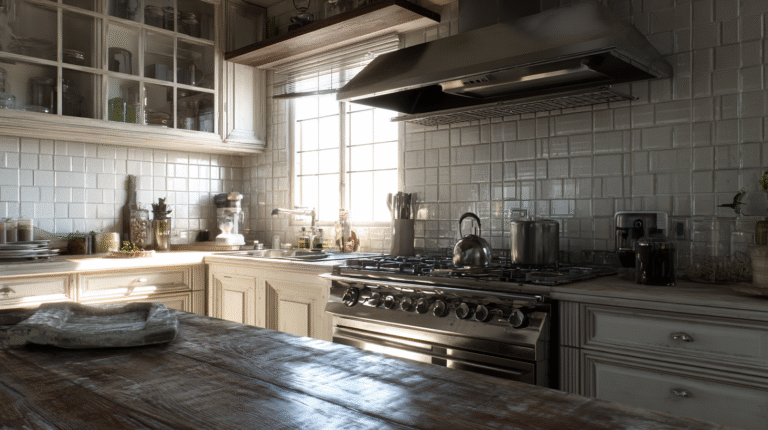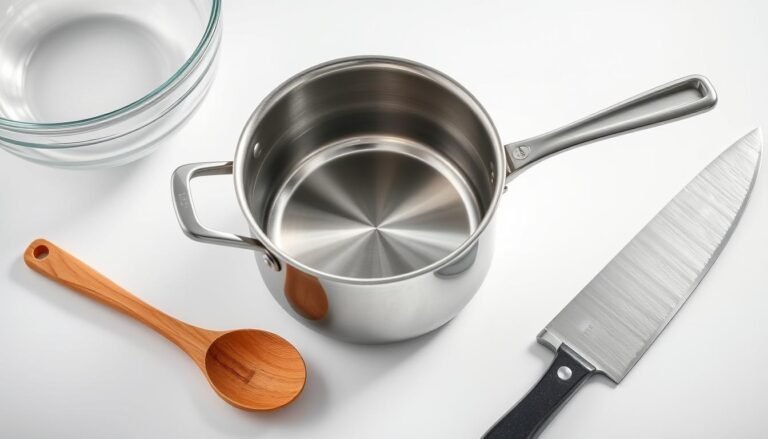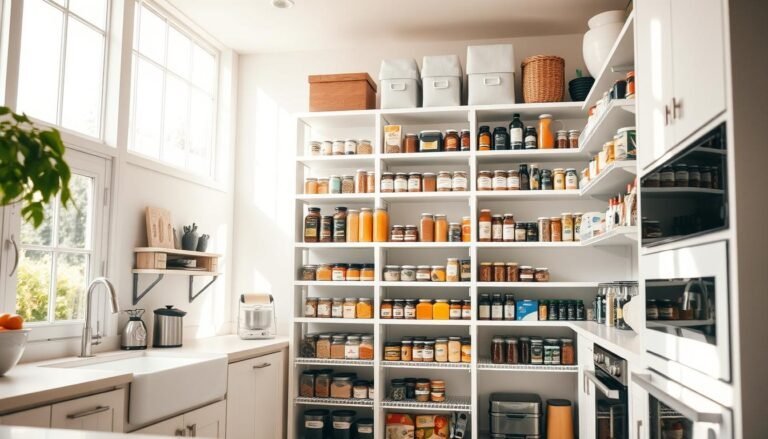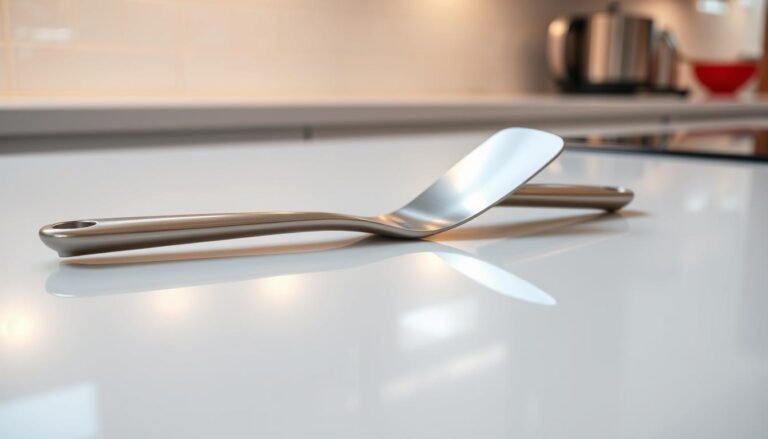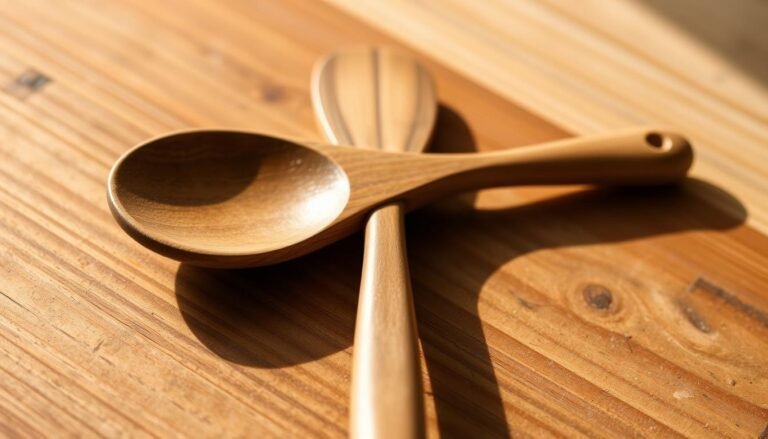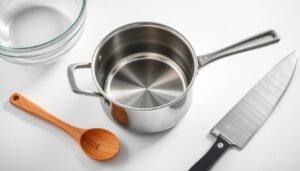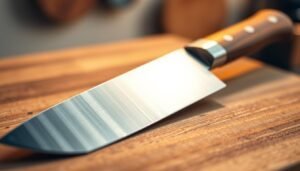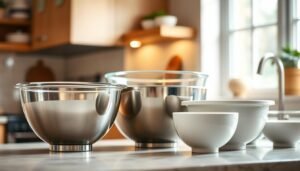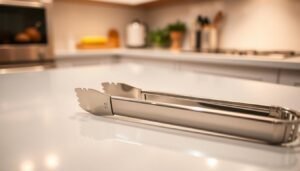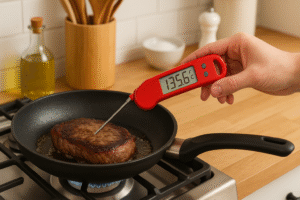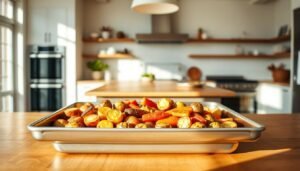Disclosure: This Post Contains Affiliate Links; We earn a commission on purchases.
To get consistent and reliable results in cooking and baking, you need more than a good recipe. You also need precision kitchen tools. Measuring cups and spoons are key for accurate ingredient measurements.
Using measuring cups and spoons means no more guessing. It helps you get the right mix of flavors and textures in every dish. Whether you’re a pro chef or just starting out, these baking essentials are vital for success.
Key Takeaways
- Precision is key to achieving consistent results in cooking and baking.
- Measuring cups and spoons are essential kitchen tools.
- Accurate measurement ensures the perfect balance of flavors and textures.
- These tools are vital for both pro chefs and home bakers.
- Using measuring cups and spoons eliminates guesswork in recipe preparation.
The Science of Precision in Cooking and Baking
Cooking and baking are all about science. They need precise measurements to get the right taste, texture, and look. Knowing how ingredients work together is key.
Why Accurate Measurements Matter
Getting the right measurements is very important. It affects how good your food tastes and looks. Too much salt or sugar can ruin a dish. Accurate measurement is a must for great cooking and baking.
The Difference Between Cooking and Baking Precision
Cooking and baking need different levels of precision. Cooking can be a bit flexible, but baking is strict. Small changes in ingredients can change the whole dish. Kitchen gadgets like digital scales help a lot in baking. Knowing how to use them makes cooking and baking better.
Essential Measuring Cups and Spoons for Every Kitchen
To get great results in the kitchen, you need the right kitchen tools. This includes measuring cups and spoons. These cooking utensils help you measure ingredients accurately. A good kitchen has standard measuring cups and spoons, key kitchen supplies.
Standard Measuring Cup Sizes
Measuring cups have standard sizes for accuracy. You’ll find 1 cup, 1/2 cup, 1/3 cup, and 1/4 cup sizes. These sizes help when measuring dry and liquid ingredients for different recipes. Having these sizes lets you follow recipes well, which is key for success.
Standard Measuring Spoon Sizes
Measuring spoons also have standard sizes for precise measurements. You’ll see 1 tablespoon, 1 teaspoon, 1/2 teaspoon, and 1/4 teaspoon sizes. These sizes fit the needs of recipes, from spices to leavening agents. Using standard measuring spoons helps make sure ingredients are right, leading to a great dish.
Types of Measuring Tools for Different Ingredients
In the kitchen, being precise is very important. You need the right tools for each ingredient to get the same results every time. Each ingredient needs a special tool to measure it correctly.
Liquid Measuring Cups
Liquid measuring cups are for liquids like water, oil, or juice. They have a spout or lip to help pour.
Reading Meniscus and Proper Technique
When using liquid measuring cups, it’s key to read the meniscus at eye level. The meniscus is the curve of the liquid’s surface. For more tips, check out cooking basics guides.
Dry Measuring Cups
Dry measuring cups are for dry ingredients like flour, sugar, or cereal. They let you scoop and level off ingredients.
Level vs. Heaped Measurements
Dry ingredients can be measured level or heaped, depending on the recipe. Level measurements are for ingredients like flour. Heaped measurements are for ingredients like brown sugar.
Digital Measuring Tools
Digital measuring tools give you precision and accuracy, great for ingredients that need weight measurements. They work for both dry and liquid ingredients.
- Provide precise weight measurements
- Can be used for both dry and liquid ingredients
- Often feature unit conversion capabilities
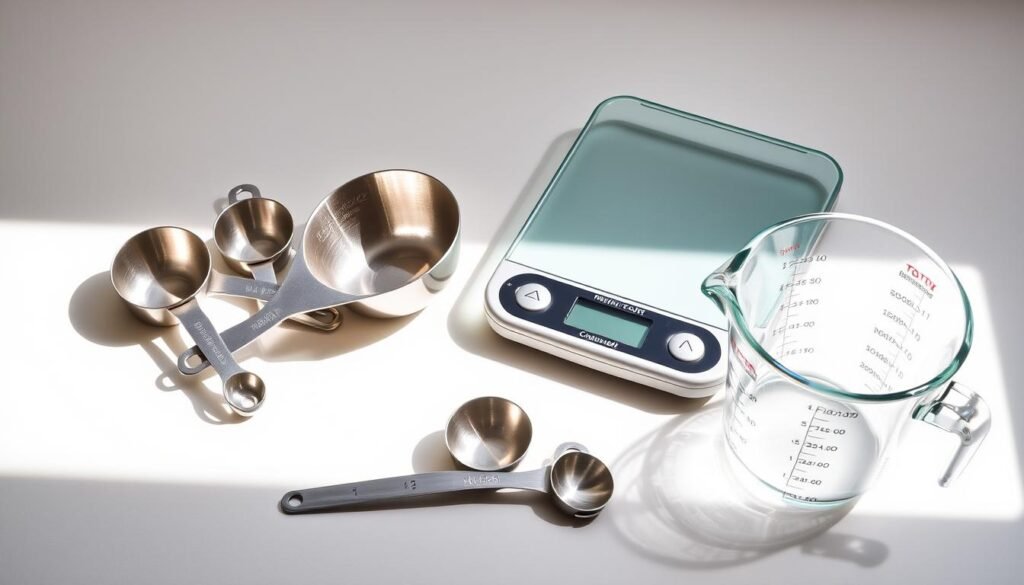
Materials and Design Features
The quality of measuring cups and spoons depends on their materials and design. This affects their durability and how well they work in cooking and baking.
Common Materials: Plastic, Metal, Glass, and Silicone
Measuring cups and spoons come in plastic, metal, glass, and silicone. Each has its own good points. Plastic is light and cheap but not as tough as metal or glass. Silicone is flexible and can handle heat, great for baking.
Ergonomic Designs and Special Features
Designs that fit well in your hand and features like non-slip handles and easy-to-read markings make measuring cups and spoons better. These help you measure ingredients accurately without hassle. 
Using the right materials and design makes measuring cups and spoons key kitchen gadgets and baking essentials. Whether you’re a pro chef or a home cook, the right tools are essential for great results.
Proper Techniques for Using Measuring Cups and Spoons
To get precise results in cooking and baking, knowing how to use measuring cups and spoons is key. Getting the measurements right is essential for consistent results.
Measuring Dry Ingredients
For dry ingredients like flour, sugar, and other powders, use a dry measuring cup. Fill the cup with the ingredient, then level it off with a knife or straight edge.
Flour, Sugar, and Other Powders
When measuring dry ingredients, spoon them into the cup. This helps avoid compacting. For example, fill the flour cup until it’s overflowing, then level it off.
Sticky Ingredients Like Honey and Peanut Butter
For sticky ingredients, use a lightly oiled measuring cup or spoon. This prevents them from sticking.
Measuring Liquid Ingredients
For liquids, use a liquid measuring cup on a flat surface. Check the measurement at eye level for accuracy.
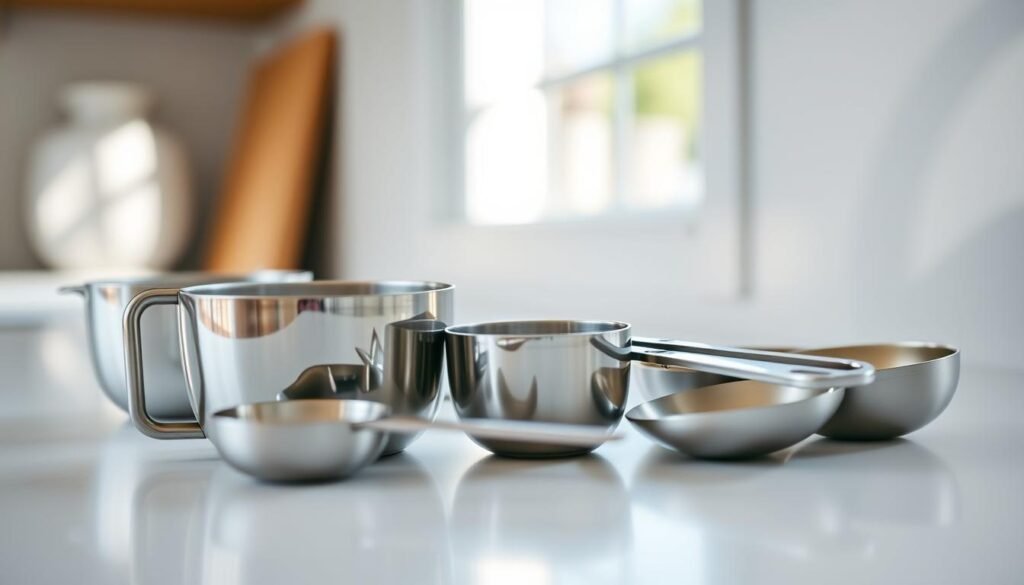
Converting Between Volume and Weight Measurements
Recipes might list ingredients in volume or weight. Knowing how to switch between these is important. A digital kitchen scale makes this easier.
Common Mistakes and Troubleshooting
Knowing how to use measuring cups and spoons is key to cooking well. Many people make mistakes that can be fixed with the right tips.
Inaccurate Measuring Techniques
One big mistake is using the wrong way to measure. For dry ingredients, spoon them into the measuring cup and level it off. This way, you get a precise amount without compacting the ingredients.
Using the Wrong Tool for the Ingredient
Another error is picking the wrong tool for the job. For example, liquid measuring cups are for liquids, and dry measuring cups are for solids. Using the right tool keeps things tidy and accurate.
Understanding Recipe Terminology
It’s also important to know the recipe terms. Words like “packed,” “level,” and “heaping” matter a lot. Learning these terms helps you avoid mistakes and get the best results.
Conclusion
Measuring cups and spoons are key in any kitchen. They help us cook and bake well. Knowing about different measuring tools can improve your cooking skills.
Using the right tools is important for good cooking. It helps you get the best results in your recipes. Whether you bake often or just sometimes, having the right tools is essential.
Adding measuring cups and spoons to your cooking can really help. The right tools and how you use them can make your dishes better. You’ll make food that tastes great and looks good too.
FAQ
What is the importance of using measuring cups and spoons in cooking and baking?
Measuring cups and spoons are key in the kitchen. They help you get the right amounts of ingredients. This leads to better cooking and baking every time.
What is the difference between cooking and baking precision?
Cooking can be a bit flexible with ingredients. But baking needs exact amounts. This is because baking relies on chemical reactions and texture.
What are the standard sizes for measuring cups and spoons?
Standard sizes for measuring cups are 1 cup, 1/2 cup, 1/3 cup, and 1/4 cup. For spoons, you have 1 tablespoon, 1 teaspoon, 1/2 teaspoon, and 1/4 teaspoon.
What type of measuring cup is best for measuring liquid ingredients?
Liquid measuring cups are perfect for liquids. They have a spout or lip for easy pouring. This makes them great for water, oil, or juice.
What is the advantage of using digital measuring tools?
Digital measuring tools give you accurate weight measurements. They can switch between units. This is great for ingredients like flour, sugar, or butter.
What materials are commonly used to make measuring cups and spoons?
Measuring cups and spoons come in many materials. You can find them in plastic, metal, glass, and silicone. Each has its own benefits, like durability or ease of cleaning.
How do I measure dry ingredients like flour and sugar accurately?
To measure dry ingredients right, use a dry measuring cup. Spoon the ingredient into the cup and level it off with a knife or straight edge.
What is the best way to measure sticky ingredients like honey and peanut butter?
For sticky ingredients, coat your measuring cup or spoon with oil or cooking spray. This prevents sticking and helps you measure accurately.
How do I convert between volume and weight measurements?
To switch between volume and weight, use a digital kitchen scale or a reliable conversion chart. Remember to consider the ingredient’s density.
What are some common mistakes to avoid when using measuring cups and spoons?
Don’t use the wrong tool for the ingredient. Also, avoid inaccurate measuring and misunderstandings of recipe terms. These mistakes can ruin your results.

With over a decade of experience turning everyday ingredients into reliable, crowd-pleasing meals, Ryan knows firsthand the frustration of wasting time and effort in the kitchen. He specializes in clear, no-fuss guidance—breaking down techniques, time-saving tips, and smart shortcuts so that even complete beginners feel empowered and confident.
Subscribe to Our Newsletter
